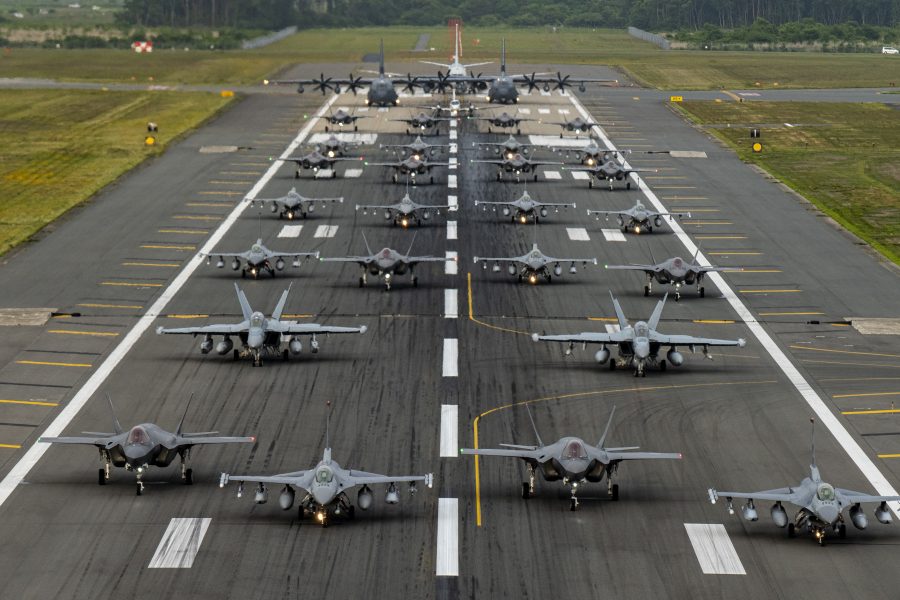The Wild Weasels at Misawa Air Base, Japan, showed off their advanced armament in the base’s first joint, bilateral elephant walk on June 22.
Twelve F-16CMs from the base lined up with 12 Japanese F-35As, two U.S. Navy E/A-18G Growlers, a Navy C-12, two U.S. Air Force MC-130Js, and a U.S. Navy P-8. The 35th Fighter Wing F-16s in the formation could be seen carrying training versions of AGM-158 Joint Air-to-Surface Standoff Missiles, in addition to AIM-120Cs, SNIPER targeting pods, and High-speed Anti-Radiation Missile targeting systems.

“The goal of this exercise was to execute a short notice, agile combat execution-style deployment and generation,” Maj. Brannan Studley, 35th Fighter Wing director of wing inspections, said in a Misawa release. “We learned a lot, refined our training, and demonstrated we’re ready to fight, which is even more critical in the middle of COVID-19 operations.”
The AGM-158, a stealthy, GPS-guided, long-range missile with a 1,000-pound warhead has taken on a prominent role in the Pacific as the Air Force has moved away from a permanent presence of nuclear-capable bombers. When B-1B Lancers returned to Andersen Air Force Base, Guam, in May the service highlighted the bomber’s ability to carry the regular AGM-158s, along with the extended range version, and the AGM-158C Long-Range Anti-Ship Missile variant as key to deterrence in the Pacific.

Misawa’s June 22 elephant walk is the latest in a series of similar events across the globe, including ones at Andersen; at Joint Base Elmendorf-Richardson, Alaska; and Aviano Air Base, Italy, among others. Air Force Chief of Staff Gen. David L. Goldfein told Air Force Magazine in an April interview that training events like these are important “to know that its Air Force is up and operating, and this would be a dangerous time to even consider taking us on.”
“We can generate airplanes. We can generate airpower. We can generate space power,” he added.
